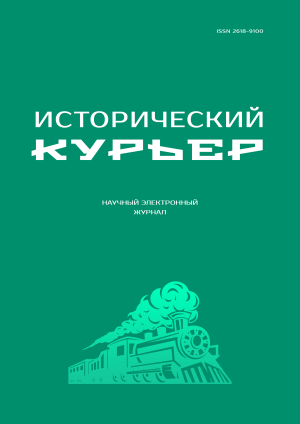In 2025, the Institute of History of the Siberian Branch of the Russian Academy of Sciences celebrates several significant dates associated with the formation and development of such branches of academic historical science in Siberia as source studies and archeography. The starting point for the anniversary dates should be 1965, with which two important events are inextricably linked: the first archaeological expeditions of employees of the Siberian Branch of the Academy of Sciences and Novosibirsk State University and the donation by Academician M.N. Tikhomirov to the Siberian Branch of the USSR Academy of Sciences of his remarkable collection of manuscripts, early printed books and historical documents. It was from that time, and for 60 years now, on a permanent basis and with regular frequency, almost every year, that archaeographic expeditions have been sent from the Novosibirsk Academic City on trips for rare books. In the first years, their sphere of interests covered a vast territory of the Trans-Urals, Siberia, the Far East and Central Asia. The result of this large-scale work was the discovery for science of many previously unknown ancient Russian and Old Believer written monuments, the most striking works of previously unknown literature of the Siberian peasantry. We can rightfully speak about the 60th anniversary of the archaeographic discovery of Siberia.
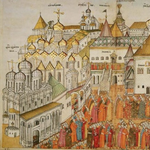 Office Work Documentation
Office Work Documentation
N.V. Sokolova
The Library of the Annunciation Cathedral of the Moscow Kremlin at the Beginning of the 18th Century (Historiographical and Source Study Aspects)
Documents from the Annunciation Cathedral in the Kremlin from the first years of church reform of Peter the Great are being introduced into scientific circulation. There are nakaz of 21 July 1701 to the stolnik S.G. Koledinsky on the description of the church “which is in the sovereign’s entryway”, and a copy of his inventory books from 1703. An analysis of parallel texts showed that the copy from 1726, according to which the cathedral inventory was published in 2018, is not entirely correct. It is stated that when studying the history of libraries, the copy of 1703 is preferable. The advisability of using all early inventories − 1680, 1701 and 1721 − is emphasized.
Publishing: 28/06/2025
How to cite: Sokolova N.V. The Library of the Annunciation Cathedral of the Moscow Kremlin at the Beginning of the 18th Century (Historiographical and Source Study Aspects) // Historical Courier, 2025, No. 3 (41), pp. 15−27. [Available online: http://istkurier.ru/data/2025/ISTKURIER-2025-3-01.pdf]
 Epistolary and Memoir Heritage
Epistolary and Memoir Heritage
T.V. Panich
“Siberian Epistles” by Ignatiy (Rimsky-Korsakov) in the Structure of Dimitri Rostovsky’s Book “The Search for the Schismatic Bryn Faith”
The article is devoted to the study of the peculiarities of the use of the “Siberian Epistles” of Ignatiy (Rimsky-Korsakov) (1696) in the anti-Old Believer treatise of Dmitri Rostovsky “The Search for the Schismatic Brynsk Faith” (1709). Based on a comparative analysis of the texts, the fragments and chapters of the “Siberian Epistles” to which the author of “The Search” turned in search of materials on the topic of the schism are identified, and the features of the writer’s work with the texts involved are revealed. The place and significance of this source in the text of the book of the Rostov Metropolitan are determined.
The article was made on the topic of the state assignment “The Past in the Manuscript Sources of the 16th−20th Centuries: Preservation and Development of Traditions” (FWZM-2024-0006).
Publishing: 28/06/2025
How to cite: Panich T.V. “Siberian Epistles” by Ignatiy (Rimsky-Korsakov) in the Structure of Dimitri Rostovsky’s Book “The Search for the Schismatic Bryn Faith” // Historical Courier, 2025, No. 3 (41), pp. 28−38. [Available online: http://istkurier.ru/data/2025/ISTKURIER-2025-3-02.pdf]
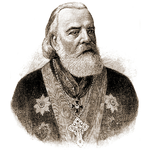 Epistolary and Memoir Heritage
Epistolary and Memoir Heritage
D.V. Dolgushin
Letters from Priest John Bazarov to V.A. Zhukovsky
The article is the first to publish documents related to the history of the relationship between priest John Bazarov and V.A. Zhukovsky − three letters from Bazarov to Zhukovsky in 1845-1848 and the baptismal certificate of P.V. Zhukovsky, the poet’s son. The publication is based on autographs, accompanied by textual and real commentary. The biographical and historical-cultural context of the published materials is reconstructed.
The article was made on the topic of the state assignment “The Past in the Manuscript Sources of the 16th−20th Centuries: Preservation and Development of Traditions” (FWZM-2024-0006).
Publishing: 28/06/2025
How to cite: Dolgushin D.V. Letters from Priest John Bazarov to V.A. Zhukovsky // Historical Courier, 2025, No. 3 (41), pp. 39−53. [Available online: http://istkurier.ru/data/2025/ISTKURIER-2025-3-03.pdf]
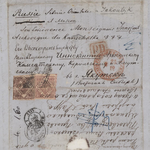 Epistolary and Memoir Heritage
Epistolary and Memoir Heritage
T.V. Medvedeva
Metropolitan Innoсent (Veniaminov) and the Spiritual Life of the Sverbeev Family in Moscow: Based on Materials from the Epistolary Archive
The article explores the personal correspondence between St. Innocent (Veniaminov) and a young official in the Siberian administration, N.D. Sverbeev, from 1852 to 1860. It examines the range of religious and socio-political topics discussed in the letters and their connection to the changes in the administration of Siberia. The author traces the evolution of the personal relationship between the Sverbeev family and Metropolitan Innoсent following his appointment to Moscow. This relationship continued in the form of support for the metropolitan’s family after his death in the 1880s.
Publishing: 28/06/2025
How to cite: Medvedeva T.V. Metropolitan Innoсent (Veniaminov) and the Spiritual Life of the Sverbeev Family in Moscow: Based on Materials from the Epistolary Archive // Historical Courier, 2025, No. 3 (41), pp. 54−65. [Available online: http://istkurier.ru/data/2025/ISTKURIER-2025-3-04.pdf]
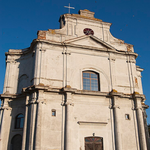 Epistolary and Memoir Heritage
Epistolary and Memoir Heritage
E.S. Tokareva
History of the Catholic Church in the USSR in the 1920s − Early 1930s Through the Prism of One Fate: A Priest’s Story
The article introduces into scientific use a document related to a small group of sources on the history of the Catholic Church in Russia, namely sources of personal origin. We are talking about the memories of a Catholic priest who served in the Kаmenets diocese in 1920–1930 and who left the USSR in 1932 as part of the prisoner exchange between the USSR and Poland. Written for the information of higher hierarchs, the document is a living memoir of a direct witness to the events related to the anti-religious policy of the Soviet government in its reflection in the policy of regional authorities.
Publishing: 28/06/2025
How to cite: Tokareva E.S. History of the Catholic Church in the USSR in the 1920s − Early 1930s Through the Prism of One Fate: A Priest’s Story // Historical Courier, 2025, No. 3 (41), pp. 66–83. [Available online: http://istkurier.ru/data/2025/ISTKURIER-2025-3-05.pdf]
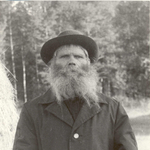 Epistolary and Memoir Heritage
Epistolary and Memoir Heritage
N.A. Starukhin
Letters of the Old Believer Writer A.G. Murachev to N.D. Zolnikova from the Lower Yenisei
The article publishes five letters from one of the most prominent Old Believer writers of the 20th−21st centuries, A.G. Murachev (1916 (1921) − 2008). Addressed to the most prominent representative of the school of Academician N.N. Pokrovsky − N.D. Zolnikova and her immediate circle, saturated with colorful folk images, the letters of the Lower Nisei mentor contain unique information related to the peculiarities of the creation of his works by the theologian, their existence; they characterize the situation in the communities of Siberian Chasovennye. The epistolary of A.G. Muracheva is a necessary link in the study of the scientific biography of N.D. Zolnikova, the work of the Novosibirsk archaeographic school.
The article was made on the topic of the state assignment “The Past in the Manuscript Sources of the 16th−20th Centuries: Preservation and Development of Traditions” (FWZM-2024-0006).
Publishing: 28/06/2025
How to cite: Starukhin N.A. Letters of the Old Believer Writer A.G. Murachev to N.D. Zolnikova from the Lower Yenisei // Historical Courier, 2025, No. 3 (41), pp. 84−100. [Available online: http://istkurier.ru/data/2025/ISTKURIER-2025-3-06.pdf]
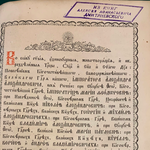 Sources on the History of the Orthodox Liturgical Tradition of the 20th Century
Sources on the History of the Orthodox Liturgical Tradition of the 20th Century
S.Yu. Akishin
Principles of Corrections of the Texts of the Pentecostarion by Professor A.A. Dmitrievsky
The article is devoted to the study of the principles and strategies used by Professor A.A. Dmitrievsky in editing the text of the Pentecostarion. The study has been conducted on the material of A.A. Dmitrievsky's Pentecostarion (St. Petersburg Theological Academy, Inventory No. 75265), which contains a number of pencil marks made by the scholar's hand. It has been established that for making corrections the scholar used an elaborate system of marking problematic places allocated in six groups. As a result of the study of corrections, the conclusion was made about the fragmentary nature of A.A. Dmitrievsky's edits, which were preliminary.
Publishing: 28/06/2025
How to cite: Akishin S.Yu. Principles of Corrections of the Texts of the Pentecostarion by Professor A.A. Dmitrievsky // Historical Courier, 2025, No. 3 (41), pp. 101−117. [Available online: http://istkurier.ru/data/2025/ISTKURIER-2025-3-07.pdf]
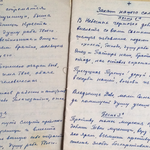 Sources on the History of the Orthodox Liturgical Tradition of the 20th Century
Sources on the History of the Orthodox Liturgical Tradition of the 20th Century
A.L. Beglov
Hymnographic Commemoration of Deceased Spiritual Fathers in the Tradition of the Secret Monastic Communities of the Vysoko-Petrovsky Monastery
The article deals with three hymnographic works created by members of the secret monastic communities of Moscow’s Vysoko-Petrovsky Monastery and dedicated to the memory of their deceased spiritual leaders. These are two canons by Archimandrite German (Polyansky), dedicated to the memory of the abbot of the monastery, Archbishop Bartholomew (Remov), written in the mid-1930s, and the canon of Nun Ignatia (Puzik) dedicated to the memory of Schiarchimandrite Ignatiy (Lebedev), written at the turn of the 1970s−1980s. These works reveal important aspects of the self-consciousness of the members of the Vysoko-Petrovsky communities, who described the spiritual state of the Christians of the Soviet era through an appeal to the biblical image of the three young men in the furnace of Babylon from the Book of Daniel and to the images of the martyrs of the first centuries of the Christian era. In addition, the works under consideration demonstrate their authors’ deep penetration into the literary world of Orthodox worship, which allowed them to clothe their personal experiences in traditional hymnographic forms.
The article is based on the author's report at the V conference “Modern Orthodox Hymnography”, organized by the Center for the Study of the Church Slavonic Language of the Institute of the Russian Language of the Russian Academy of Sciences (Moscow, March 9−10, 2016). The author expresses gratitude to the colleagues who took part in the discussion of this work, especially priest Maxim Plyakin, A.G. Kravetsky, I.A. Fadeev.
Publishing: 28/06/2025
How to cite: Beglov A.L. Hymnographic Commemoration of Deceased Spiritual Fathers in the Tradition of the Secret Monastic Communities of the Vysoko-Petrovsky Monastery // Historical Courier, 2025, No. 3 (41), pp. 118–137. [Available online: http://istkurier.ru/data/2025/ISTKURIER-2025-3-08.pdf]
 Sources on the History of the Orthodox Liturgical Tradition of the 20th Century
Sources on the History of the Orthodox Liturgical Tradition of the 20th Century
E.A. Poletaeva
Musiс Manuhandwritten Cores of the Priest Peter Taratuta from the Rare Collection of the Library of the Yekaterinburg Theological Seminary (Part 2)
This article continues the publication of a scientific description of the musical manuscripts of priest Peter Taratuta (1909−1978) from the rare book collection of the Yekaterinburg Theological Seminary, and introduces into scientific circulation four musical collections compiled by his hand. Three collections of scores (EDS RK ms. 43207, ms. 43209, ms. 43210), according to written records, were completed by Archpriest Peter Taratuta from 1943 to 1948, when he served in parishes in the cities of Molodechnoye, Osipovichi, and the town of Lebedevo during the German occupation (1941-1944) and after the liberation of Belarus from the fascist invaders (1944-1948). Another collection, (EDS RK ms. 43213), which does not have written notes, we were also able to attribute it to the manuscripts compiled by Peter Taratuta, identifying him by his handwriting. The musical sources introduced into scientific use allow us to give a detailed idea of church singing in the mid-20th.
Publishing: 28/06/2025
How to cite: Poletaeva Е.А. Musiс Manuhandwritten Cores of the Priest Peter Taratuta from the Rare Collection of the Library of the Yekaterinburg Theological Seminary (Part 2) // Historical Courier, 2025, No. 3 (41), pp. 138–157. [Available online: http://istkurier.ru/data/2025/ISTKURIER-2025-3-09.pdf]
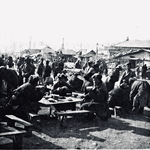 Periodicals of the Russian Orthodox Church
Periodicals of the Russian Orthodox Church
K.A. Semenchuk
Church Periodicals and “Inorodtsy” of the Far East: The Rhetoric of Stereotypes at the Turn of the 19th−20th Centuries
The article examines the stereotypical images of the indigenous population on the eastern frontiers of the Russian Empire, as depicted in church periodicals. Key descriptive patterns of the Inorodsy were identified, which were actively employed not only due to direct interactions with local populations but also under the influence of the political realities of that time. Church representatives sought to eliminate elements perceived as alien to Russian statehood, using rhetoric as a tool of political influence and to strengthen imperial authority.
Publishing: 28/06/2025
How to cite: Semenchuk K.A. Church Periodicals and “Inorodtsy” of the Far East: The Rhetoric of Stereotypes at the Turn of the 19th−20th Centuries // Historical Courier, 2025, No. 3 (41), pp. 158−170. [Available online: http://istkurier.ru/data/2025/ISTKURIER-2025-3-10.pdf]
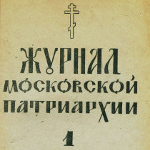 Periodicals of the Russian Orthodox Church
Periodicals of the Russian Orthodox Church
M.S. Markova
Review of Publications of the Journal of the Moscow Patriarchate on the History of the Renovationist and Lubensky Schisms in the Russian Orthodox Church (1943−1946)
The research presented here examines publications in the Journal of the Moscow Patriarchate concerning the liquidation of the Renovationist and Lubensky schisms from 1943 to 1946. The articles publications are subjected to analysis and evaluation of their content. The intricate historical processes within the church and its relationship with the state during this period are characterized. Emphasis is placed on the significance of the publications under analysis as historical sources pertaining to the Russian Orthodox Church in the twentieth century.
The article was made on the topic of the state assignment “The Past in the Manuscript Sources of the 16th−20th Centuries: Preservation and Development of Traditions” (FWZM-2024-0006).
Publishing: 28/06/2025
How to cite: Markova M.S. Review of Publications of the Journal of the Moscow Patriarchate on the History of the Renovationist and Lubensky Schisms in the Russian Orthodox Church (1943−1946) // Historical Courier, 2025, No. 3 (41), pp. 171−182. [Available online: http://istkurier.ru/data/2025/ISTKURIER-2025-3-11.pdf]
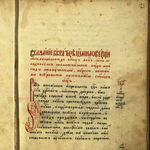 Manuscript and Book Monuments of the Old Believers
Manuscript and Book Monuments of the Old Believers
N.S. Gurianova
On the Creative Heritage of the Old Believer Timofey Matveyev Lysenin
This article explores the creative legacy of Timofey Lysenin, an ideologist of the deacon’s agreement (dyakonovo soglasie). It highlights four books he authored between 1705 and 1713, which served as foundational texts for the creation of a new Book. The article provides a detailed analysis of this text, accompanied by a Table of Contents in the appendix. In conclusion, it emphasizes that in the 62 chapters of this book, Lysenin sought to express his conception of true doctrine as it exists within church tradition, reflecting his understanding of the subject.
The article was made on the topic of the state assignment “The Past in the Manuscript Sources of the 16th−20th Centuries: Preservation and Development of Traditions” (FWZM-2024-0006).
Publishing: 28/06/2025
How to cite: Gurianova N.S. On the Creative Heritage of the Old Believer Timofey Matveyev Lysenin // Historical Courier, 2025, No. 3 (41), pp. 183−196. [Available online: http://istkurier.ru/data/2025/ISTKURIER-2025-3-12.pdf]
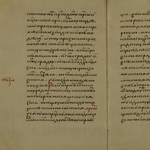 Manuscript and Book Monuments of the Old Believers
Manuscript and Book Monuments of the Old Believers
L.V. Titova
On Narrative Sources in the Epistle of Deacon Fyodor to His Son Maxim (“About a Small Youth and a Great Sinner”)
The article is dedicated to one of the narrative sources of the Epistle of Deacon Fyodor Ivanov to his son Maxim, namely the moralizing story “About a Small Youth and a Great Sinner”, copied from the “Book of St. Gregory, Pope of Rome…”. It is concluded that the retelling of the story serves as a kind of exposition of the second part of the Epistle: the appeal to the plot about proper Christian education, ending with the conclusion “to guard against all wickedness”, gives impetus to further denunciation of apostates from the true faith. In conclusion, the full text of the tale “About a Small Youth and a Great Sinner” from the manuscript of the collection of the Trinity-Sergius Monastery (RSL, f. 304/1, ms. 153, fol. 274v–276r) is published.
The article was made on the topic of the state assignment “The Past in the Manuscript Sources of the 16th−20th Centuries: Preservation and Development of Traditions” (FWZM-2024-0006).
Publishing: 28/06/2025
How to cite: Titova L.V. On Narrative Sources in the Epistle of Deacon Fyodor to His Son Maxim (“About a Small Youth and a Great Sinner”) // Historical Courier, 2025, No. 3 (41), pp. 197−203. [Available online: http://istkurier.ru/data/2025/ISTKURIER-2025-3-13.pdf]
 Manuscript and Book Monuments of the Old Believers
Manuscript and Book Monuments of the Old Believers
V.V. Podoprigora
Pomorian Book of One Hundred Chapters in Old Believer’s Manuscript Miscellanies of the 19th Century
In state and church collections of manuscripts Russian archaeographers and researchers of Old Believer literature have noted miscellanies of quotations from Holy Scripture, patristic tradition, hagiographic, canonical and historical books devoted to the salvation of believers in the times of the “worshipless” state of the church, according to the ideas of the priestless Old Believers. In scientific descriptions, such miscellanies are usually defined as “Florilegia”, “polemical miscellanies of extracts”, etc. Their creation was associated with various priestless Old Believers’ writers and scribes, for example, Daniel Bityugovsky, a Theodosian, Timofey Andreev, a Pomorian, and Yefim Perevoshchikov, a Spasovite. To clarify the author’s attribution of the miscellany, which appears in some copies and testimonies of the expert on Old Believer literature Pavel Lyubopytnyi as the Book of One Hundred Chapters (book “Stoglav”), and to clarify the relationship with the partially identical composition of the “Collection from various books…” it was necessary to refer to the most important manuscripts of the late 18th − early 20th centuries. A study of the copy from manuscript collection of Metropolitan Philaret (Drozdov), which had not previously drawn attention of researchers, showed its special place in the textual tradition of miscellanies of this type and confirmed authorial attribution of the Pomorian “Stoglav”.
The article was prepared according to the plan of research work of the State Public Technological Library, the project “The Depository of Book Monuments of Siberia and the Far East: Identification, Digital Storage System and Organization of Access for Research”, No. 122040600049-8.
Publishing: 28/06/2025
How to cite: Podoprigora V.V. Pomorian Book of One Hundred Chapters in Old Believer’s Manuscript Miscellanies of the 19th Century // Historical Courier, 2025, No. 3 (41), pp. 204−218. [Available online: http://istkurier.ru/data/2025/ISTKURIER-2025-3-14.pdf]
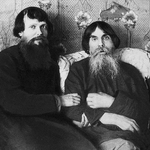 Manuscript and Book Monuments of the Old Believers
Manuscript and Book Monuments of the Old Believers
P.I. Mangilev
Old Believer hectographed edition of “Acts of the Council in Vichuga” (“Deyaniya Vichugovskogo sobora”) from the Collection of the Sverdlovsk Regional Museum of Local Lore Named after O.E. Cler
The article summarizes observations on a hectographed edition that contains materials from two councils of Old Believer Wanderers (Beguny) that took place in the “Vichugovskaya stranа” in 1912−1913. The councils were directed against A. V. Ryabinin, the leader of the agreement. He was accused of abuse of power, the establishment of a mill and trade. Three copies of this hectographed edition are known. Comparison of copies of the edition allowed us to make a number of observations about the work on the edition. The compiler of the collection of materials of the councils and its publisher was M.I. Smirnov-Zalessky. The hectographed edition contains a large and interesting material on the history of the Wanderer’s confession. The hectographed edition is described in detail based on the copy of the Sverdlovsk Regional Museum of Local History named after O.E. Cler. A detailed list of the composition of the collection of materials of the cathedrals is given.
Publishing: 28/06/2025
How to cite: Mangilev P.I. Old Believer hectographed edition of “Acts of the Council in Vichuga” (“Deyaniya Vichugovskogo sobora”) from the Collection of the Sverdlovsk Regional Museum of Local Lore Named after O.E. Cler // Historical Courier, 2025, No. 3 (41), pp. 219−234. [Available online: http://istkurier.ru/data/2025/ISTKURIER-2025-3-15.pdf]
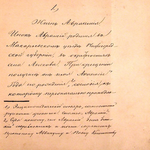 Manuscript and Book Monuments of the Old Believers
Manuscript and Book Monuments of the Old Believers
L.D. Demidova
Petition of Monk Avraamii in the Term Papers of Students of the Moscow Theological Academy (1864−1905)
Term papers by students of the Moscow Theological Academy, dedicated to the study of the Petition of the monk Avraamii (1670) is only a small part of the works on the schism of the Russian Church in the 17th century, which have been preserved in the archives of the Moscow Theological Academy. This church educational institution became one of the centers for the scientific study of the Old Believers in the second half of the 19th century. An analysis of student works written on the same topic over the course of half a century, when there was an active increase in scientific knowledge about the schism and its leaders, makes it possible to see how the students assimilated the latest scientific results, some of which they received first-hand, and also to answer the question of how involved the students themselves were in the process of generating this knowledge.
The article was made on the topic of the state assignment “The Past in the Manuscript Sources of the 16th−20th Centuries: Preservation and Development of Traditions” (FWZM-2024-0006).
Publishing: 28/06/2025
How to cite: Demidova L.D. Petition of Monk Avraamii in the Term Papers of Students of the Moscow Theological Academy (1864−1905) // Historical Courier, 2025, No. 3 (41), pp. 235−248. [Available online: http://istkurier.ru/data/2025/ISTKURIER-2025-3-16.pdf]
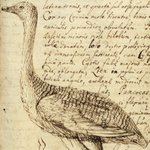 Works and Materials of Scientific Expeditions to Siberia in the 18th Century
Works and Materials of Scientific Expeditions to Siberia in the 18th Century
L.D. Bondar, A.V. Smirnov, D.M. Andreeva
Ornithological Drawings in the Materials of D.G. Messerschmidt
The article presents one of the components of the ornithological descriptions of D.G. Messerschmidt (1685−1735), made by him during a scientific trip to Siberia − sketches available in two ornithological manuscripts: “Ornithologicon” and “Mantissa ornithologica”, stored in the St. Petersburg Branch of the Archive of the Russian Academy of Sciences. These drawings complement the portrait of Messerschmidt-ornithologist as a naturalist who strives to create a scientific relation with perfectionist precision.
Publishing: 28/06/2025
How to cite: Bondar L.D., Smirnov A.V., Andreeva D.M. Ornithological Drawings in the Materials of D.G. Messerschmidt // Historical Courier, 2025, No. 3 (41), pp. 249−273. [Available online: http://istkurier.ru/data/2025/ISTKURIER-2025-3-17.pdf]
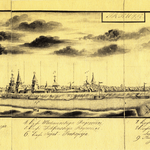 Works and Materials of Scientific Expeditions to Siberia in the 18th Century
Works and Materials of Scientific Expeditions to Siberia in the 18th Century
I.A. Shipilov
Works and Materials of Participants of Academic and Government Expeditions of the 18th Century as Sources for Historical Urban Studies of Siberia
The article offers one of the first comprehensive descriptions in scientific literature of written, cartographic and pictorial materials from the scientific heritage of expeditions (1710s−1730s), the journey (1719−1727) under leadership of D.G. Messerschmidt, the Second Kamchatka Expedition (1733−1743), astronomical and physical expeditionary campaigns (1740s−1770s), and the North−Eastern Geographical and Astronomical Expedition (1785−1795) under the leadership of J. Billings and G.A. Sarychev as sources on historical urbanism (urban studies) of Siberia of the 18th century. The high information potential and scientific value of the sources are identified and represented, variable methods of their analysis are demonstrated, and based on their results, a conclusion is drawn about the multilinear development of Siberian cities in the century under study.
The article was made on the topic of the state assignment “The Past in the Manuscript Sources of the 16th−20th Centuries: Preservation and Development of Traditions” (FWZM-2024-0006).
Publishing: 28/06/2025
How to cite: Shipilov I.A. Works and Materials of Participants of Academic and Government Expeditions of the 18th Century as Sources for Historical Urban Studies of Siberia // Historical Courier, 2025, No. 3 (41), pp. 274−292. [Available online: http://istkurier.ru/data/2025/ISTKURIER-2025-3-18.pdf]
 Scientific Life
Scientific Life
L.D. Bondar
On the 80th Anniversary of Victory: All-Russian Scientific Conference “Science during the Great Patriotic War: A Gallery of Scientists”
The article provides information about the All-Russian Scientific Conference “Science during the Great Patriotic War: a Gallery of Scientists”, which held in St. Petersburg on May 13−16, 2025 and brought together representatives of academic and university science from more than a dozen regions of the Russian Federation, as well as from Belarus, Uzbekistan, Tajikistan, Mongolia.
The study was supported by the Russian Science Foundation No. 25-18-00293.
Publishing: 28/06/2025
How to cite: Bondar L.D. On the 80th Anniversary of Victory: All-Russian Scientific Conference “Science during the Great Patriotic War: A Gallery of Scientists” // Historical Courier, 2025, No. 3 (41), pp. 293−308 [Available online: http://istkurier.ru/data/2025/ISTKURIER-2025-3-19.pdf]



